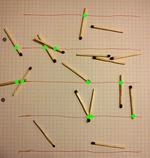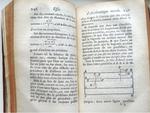General
There is time for dithering in a quantized world of reduced dimensionality!
I’m glad to announce here a new work made in collaboration with Valerio Cambareri (UCL, Belgium) on quantized embeddings of low-complexity vectors, such as the set of sparse (or compressible) signals in a certain basis/dictionary, the set of low-rank matrices or vectors living in (a union of) subspaces.
There is time for dithering in a quantized world of reduced dimensionality!
I’m glad to announce here a new work made in collaboration with Valerio Cambareri (UCL, Belgium) on quantized embeddings of low-complexity vectors, such as the set of sparse (or compressible) signals in a certain basis/dictionary, the set of low-rank matrices or vectors living in (a union of) subspaces.
Quantized sub-Gaussian random matrices are still RIP!
I have always been intrigued by the fact that, in Compressed Sensing (CS), beyond Gaussian random matrices, a couple of other unstructured random matrices respecting, with high probability (whp), the Restricted Isometry Property (RIP) look like “quantized” version of the Gaussian case, i.
Testing a Quasi-Isometric Quantized Embedding
It took me a certain time to do it. Here is at least a first attempt to test numerically the validity of some of the results I obtained in “A Quantized Johnson Lindenstrauss Lemma: The Finding of Buffon’s Needle.
When Buffon's needle problem meets the Johnson-Lindenstrauss Lemma
Quasi-isometric embeddings of vector sets with quantized sub-Gaussian projections | Le Petit Chercheur Illustré - Apr 2, 2015
[…] explained in my previous post on quantized embedding and the funny connection with Buffon’s needle problem, I have recently noticed that for finite […]
When Buffon's needle problem meets the Johnson-Lindenstrauss Lemma
[caption id=“attachment_346” align=“alignnone” width=“640”] (left) Picture of [8, page 147] stating the initial formulation of Buffon’s needle problem (Courtesy of E. Kowalski’s blog) (right) Scheme of Buffon’s needle problem.[/caption](This post is related to a paper entitled “A Quantized Johnson Lindenstrauss Lemma: The Finding of Buffon’s Needle” (arxiv, pdf) that I have recently submitted for publication.
When Buffon''s needle problem meets the Johnson-Lindenstrauss Lemma
Last July, I read the biography of Paul Erdős written by Paul Hoffman and entitled “The Man Who Loved Only Numbers”. This is really a wonderful book sprinkled with many anecdotes about the particular life of this great mathematician and about his appealing mathematical obsessions (including prime numbers).
Recovering sparse signals from sparsely corrupted compressed measurements
Last Thursday after an email discussion with Thomas Arildsen, I was thinking again to the nice embedding properties discovered by Y. Plan and R. Vershynin in the context of 1-bit compressed sensing (CS) [1].
Recovering sparse signals from sparsely corrupted compressed measurements
Last Thursday after an email discussion with Thomas Arildsen, I was thinking again to the nice embedding properties discovered by Y. Plan and R. Vershynin in the context of 1-bit compressed sensing (CS) [1].
A useless non-RIP Gaussian matrix
Recently, for some unrelated reasons, I discovered that it is actually very easy to generate a Gaussian matrix $ \Phi$ that does not respect the restricted isometry property (RIP) [1]. I recall that such a matrix is RIP if there exists a (restricted isometry) constant $ 0<\delta<1$ such that, for any $ K$-sparse vector $ w\in \mathbb R^N$,



